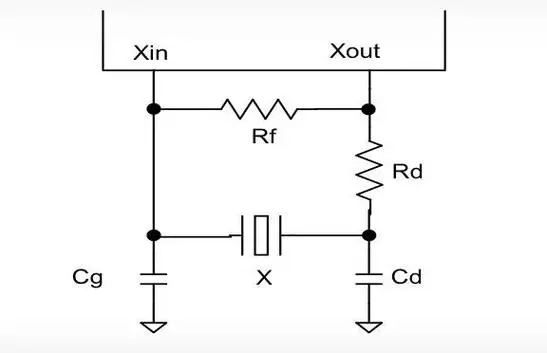1. Frequency difference: When the frequency of the crystal oscillator deviates, it may cause color image distortion, audio noise, data transmission interruption, shortened transmission distance, and unresponsive remote control. To solve this problem, you can try adjusting the load capacitance of the crystal oscillator or the size of the circuit matching capacitance, or choose a crystal oscillator with different load capacitance for replacement.
2. Excitation level too high or too low: If the excitation level is too high or too low, the crystal oscillator may not work properly. The solution is to adjust the excitation level of the oscillation circuit on the crystal oscillator output by adjusting the size of Rd in the circuit. Generally speaking, the smaller the excitation level, the better. This not only reduces processing power consumption, but is also related to the stability of the oscillation circuit and the lifespan of the crystal oscillator.
3. Improper storage environment: Prolonged use or storage under high temperature, low temperature, or high humidity conditions may cause deterioration of the electrical performance of the crystal oscillator, leading to failure to vibrate. The solution is to use and store it under normal temperature and humidity conditions as much as possible to avoid moisture on the crystal oscillator or circuit board.
4. Impact of welding temperature: Excessive welding temperature may damage the crystal oscillator, thereby affecting the parameter indicators. To avoid this situation, the welding method can be changed to adopt post welding, or the welding temperature can be appropriately reduced to ensure that the welding quality meets the requirements.
5. The impact of ultrasonic welding: When crystal oscillator products cannot withstand the ultrasonic welding process, it may cause the product to not work or increase the defect rate. At this point, it is possible to try replacing products that can withstand ultrasonic welding.
6. Matching problem: The matching problem between the crystal oscillator and the circuit may lead to unstable operation or performance degradation. For example, a certain MCU needs to be matched with a 6PF 32.768KHz, but chooses a 12.5PF, resulting in no vibration. To solve the matching problem, you can try adjusting the load capacitance of the crystal oscillator or the size of the circuit matching capacitance, or choose a crystal oscillator model that matches the circuit.
7. Unstable or non oscillating operation: If the crystal oscillator experiences instability or non oscillation during operation, it may be caused by poor quality of the crystal oscillator or too small negative impedance of the circuit. At this point, it is possible to try replacing the crystal oscillator with a better quality one or adjusting the circuit, such as reducing the value of C1 * C2, selecting an IC with a larger qm value, increasing the oscillation current, etc.
8. Noise interference: The output signal of the crystal oscillator may be affected by noise interference from surrounding circuits, such as power supply noise, resulting in unstable output signals. To reduce the impact of power supply noise, it is possible to optimize the power supply design or add appropriate power filters to the crystal oscillator circuit.
9. Signal interference: The signal of the crystal oscillator may be interfered by other circuits, leading to a decrease in performance. To reduce signal interference, appropriate filters or shielding measures can be added to the crystal oscillator circuit to improve signal quality.
10. The impact of static electricity/excessive current: Static electricity or excessive current may burn out crystal oscillator products. To prevent this situation from happening, it is necessary to take anti-static measures and add circuit protection functions.
11. Temperature stability: The frequency of crystal oscillators may be affected by temperature changes, leading to fluctuations in equipment performance. To improve temperature stability, crystal oscillators with temperature compensation function can be selected, or temperature compensation components can be added to the circuit.
12. Aging issue: After prolonged use, aging may occur, leading to frequency deviation or decreased stability. To solve the aging problem, it is possible to try regular replacement of the vibration or adopt appropriate maintenance measures, such as regular cleaning and avoiding excessive vibration.
13. Impact of drop/vibration: When the drop or vibration conditions exceed the strength that the crystal oscillator can withstand, it may cause the entire machine to not work or the product to be defective. To solve this problem, different specifications of crystal oscillators can be replaced, such as selecting larger products for automotive applications and smaller products for convenience products.
14. MCU quality issues or software issues: These issues may also cause the crystal oscillator to not vibrate. The solution is to choose a reputable supplier to purchase genuine MCUs, while ensuring that there are no issues with the burning program.
15. EMC issue: If the EMC on the circuit is high, try to use metal packaging products. Additionally, do not use signal wires underneath the crystal oscillator to avoid interference,



